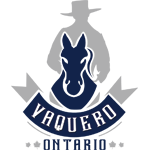Reflection on Horsemanship, Leadership, and Responsibility
When I first watched the now well-known video involving Charlotte Dujardin, I, like many others, felt a physical reaction—tension, discomfort, unease. But instead of rushing to judgment, I took a moment to ask myself, “In Charlotte’s world, within the framework of high-level dressage, was this behaviour considered cruel, or was it standard practice?” It’s a complicated question—one worth exploring with openness and honesty.
It brought me back to a difficult experience in 2015. I had loaned my horse to a friend so her young daughter could attend what was billed as a “Clinton Anderson Horsemanship Clinic.” I agreed, thinking it would be a valuable opportunity. Unfortunately, what unfolded at that clinic deeply disturbed me—and still does to this day.
The main approach being taught was to use a so-called “carrot stick” to pressure horses into submission. For context, the tool in question was essentially a repurposed metal golf club shaft—far from the friendly-sounding name it carried.
In one particularly upsetting video I captured, a participant—a 15-year-old girl—struck her horse over 70 times in just over a minute. The horse was hit repeatedly across the head, face, neck, and chest, all while being encouraged by the clinic’s instructor. In the background, laughter could be heard—not out of cruelty, I suspect, but likely nervousness or disbelief.
The video, when shared online, gained more than 50,000 views in just a day. My intent was to shine a light on what I felt was a troubling example of poor horsemanship and misguided instruction. Even Clinton Anderson’s own team publicly disassociated themselves from the clinic and its leader, confirming he was not an authorized representative.
However, I made the decision to remove the video after realizing the unintended consequences. The instructor received threats. Even more concerning, so did the young girl—who was, after all, just following the direction of someone she believed was an authority. As someone with a background in psychology, I couldn’t ignore the relevance of the Milgram experiments, which showed how easily people defer responsibility to those in perceived positions of power. This wasn’t a case of malice—it was a failure in leadership, education, and awareness.
Unfortunately, this isn’t an isolated case. In every corner of the horse world—from local barns to elite arenas—there are moments, sometimes fleeting, sometimes frequent, where horses are handled in ways that are questionable at best and harmful at worst. Often, these actions are passed down by well-meaning mentors simply repeating what they were taught, or driven by the pressure to produce quick results.
One local trainer I came across proudly demonstrates the use of a cavesson combined with a twisted wire snaffle bit—equipment that can cause significant discomfort, particularly when used on green horses. Yes, most tack was designed with a specific purpose, but too often it becomes a shortcut, a way to overpower rather than understand.
True horsemanship, in my view, is not about domination—it’s about partnership. It’s not about control; it’s about communication and feel. Sadly, in many equestrian sports, the focus shifts from the welfare of the horse to the judgment of the show ring. The priority becomes pleasing judges, earning ribbons, and meeting aesthetic criteria that often conflict with equine biomechanics or well-being.
Take, for example, the concept of “collection.” In classical terms, it’s about balance, lightness, and self-carriage. But in some disciplines, collection has been distorted to the point where horses are expected to move with their noses dragging near the ground—something that biomechanically makes little sense and can actually hinder a horse’s ability to move freely and soundly.
These practices don’t reflect thoughtful horsemanship. They reflect something else entirely—something I’d call forcemanship.
I don’t claim to have all the answers. I’m not here to condemn individuals, but rather to question systems, traditions, and practices that may no longer serve horses—or us. I believe we all have a responsibility to keep learning, to stay curious, and to stay humble in the presence of these incredible animals.
If any part of this resonates with you, I encourage you to continue exploring different perspectives. There are compassionate, patient, and effective ways to work with horses that don’t rely on harsh tools or techniques. And if you’re ever unsure, ask yourself one simple question: “What would the person in the mirror think?”
Let your conscience be your compass. It’s not about being perfect—it’s about being mindful, and striving every day to do better for the horses we’re lucky enough to partner with.

